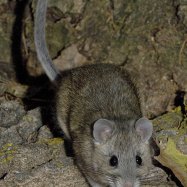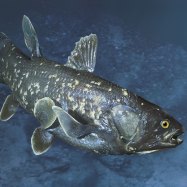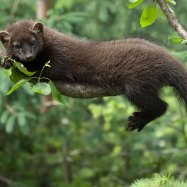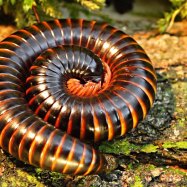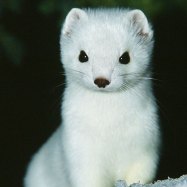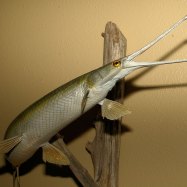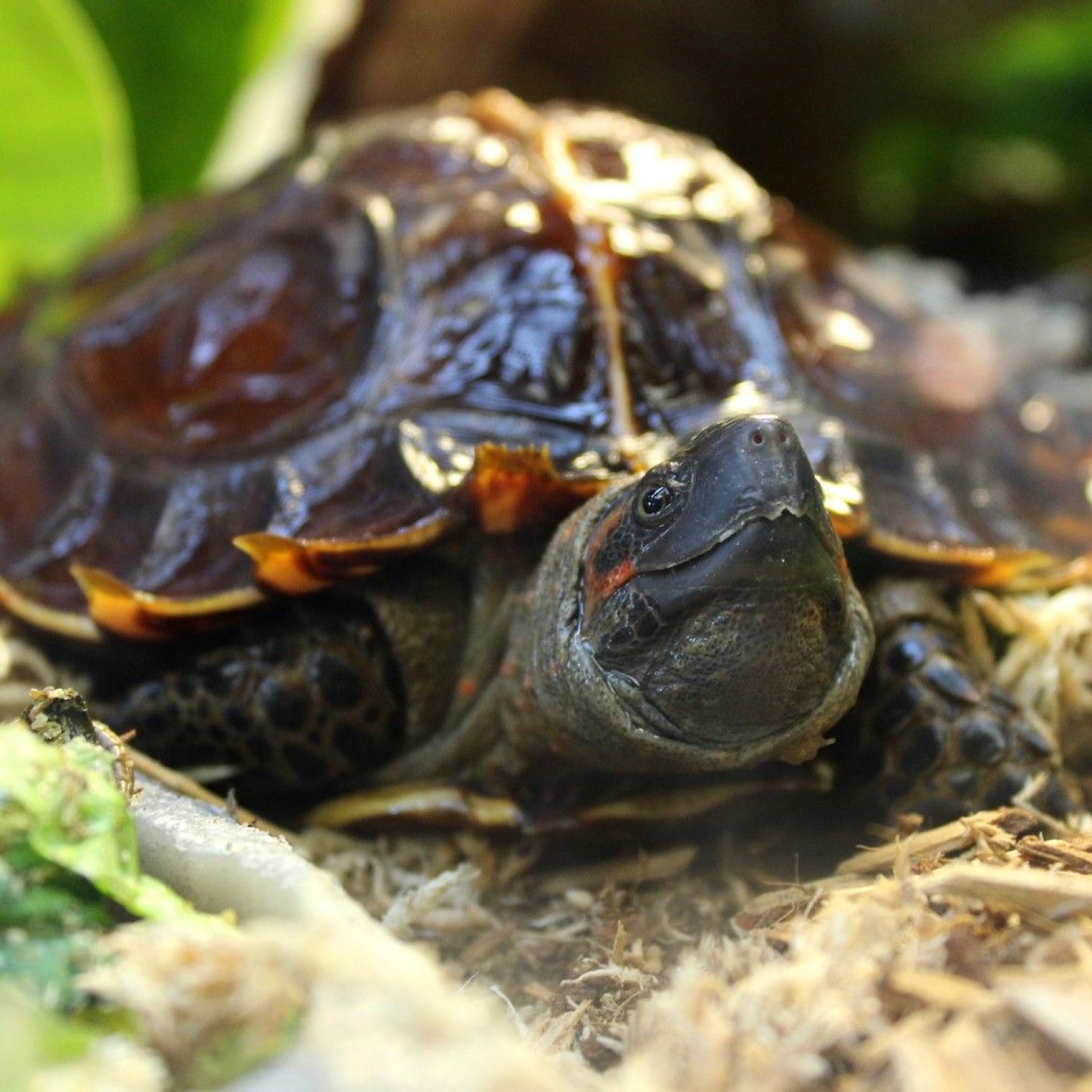
Spiny Hill Turtle
20-25 cm (8-10 inches)
The Spiny Hill Turtle, found in Sumatra, Borneo, and Peninsular Malaysia, is a small but mighty creature. With a body length of 20-25 cm (8-10 inches) and a round, flat shell, it belongs to the family Geoemydidae. Although it may seem unassuming, this medium-sized turtle has unique features like spiny projections on its shell. Keep an eye out for this fascinating animal on your next trip to Southeast Asia! #SpinyHillTurtle #Geoemydidae #SoutheastAsiaWildlife
Animal Details Summary:
Common Name: Spiny Hill Turtle
Kingdom: Animalia
Habitat: Tropical rainforests
Welcome to the World of the Spiny Hill Turtle: A Majestic Creature of Southeast Asia
The lush tropical rainforests of Southeast Asia are home to some of the most fascinating and diverse species of animals. One such creature that roams these lands is the spiny hill turtle, also known as Heosemys spinosa. With its unique appearance and impressive features, this medium-sized reptile has captured the hearts of many.A Name That Speaks for Itself
The spiny hill turtle gets its common name from the numerous spines adorning its shell, making it a standout among other turtles Spiny Hill Turtle. Its scientific name, Heosemys spinosa, also refers to its spiny nature, with "heosemys" being derived from Greek words meaning "land tortoise" and "spinosa" meaning thorny or spiky.A Place in the Animal Kingdom
Belonging to the animalia kingdom and chordata phylum, the spiny hill turtle is a reptile of the class Reptilia and order Testudines. Its family is Geoemydidae, which includes several other species of turtles found in different parts of the world.A Habitat Fit for a Queen
The spiny hill turtle calls the evergreen tropical rainforests of Southeast Asia its home. These forests provide the perfect environment for these creatures to thrive with their humid and warm climate. They can also be found near bodies of water such as rivers, streams, and marshes.A Diet of Variety
As omnivores, spiny hill turtles have a varied diet. They primarily feed on plants, including fruits, leaves, and fungi, but also occasionally indulge in small invertebrates and insects. This versatile palate allows them to adapt to the changing seasons and availability of food in their habitat Sable German Shepherd.A Geographical Distribution
The spiny hill turtle is endemic to Southeast Asia, specifically Indonesia and Malaysia. Within these countries, they can be found in the islands of Sumatra, Borneo, and Peninsular Malaysia. Their preferred habitats can be found in high elevations, ranging from 200 to 800 meters above sea level.The Beauty of Dark Colors
The spiny hill turtle's appearance is truly one of a kind. It has a dark brown to black shell, which is covered in small spines, giving it a rough texture. Its head and limbs also have dark coloring, with its skin often being a deep shade of brown. This dark coloration is perfect for camouflage in its natural habitat.A Unique Body Shape
Unlike other turtles with flat shells, the spiny hill turtle has a more rounded and domed carapace, which can grow to a length of 20-25 cm (8-10 inches). This feature makes them more agile and easier to navigate through the thick vegetation of their rainforest home. They also have a triangular-shaped head, giving them a distinct appearance.The Natural Length of Life
On average, spiny hill turtles can live up to 15-20 years in the wild. However, if kept in captivity, they can live for over 25 years. These turtles have a slow growth rate, taking up to 5-7 years to reach sexual maturity and start reproducing.A Threatened Species
The spiny hill turtle is classified as a vulnerable species due to habitat loss, poaching, and the exotic pet trade. Their slow reproduction rate also makes it difficult for them to recover from population decline. Conservation efforts are ongoing, but their numbers continue to decrease.The Mating Rituals of Spiny Hill Turtles
During the breeding season, male spiny hill turtles will fight for the attention of the females, often resulting in scratches and bite marks on their shells. Once a male successfully mates with a female, she will lay a clutch of 2-5 eggs in a hole dug in the ground, covering it with leaves and soil. The eggs will hatch after 60-90 days, and the hatchlings will make their way to the nearest body of water.The Importance of NLP in Studying Spiny Hill Turtles
With advancements in technology, researchers have turned to natural language processing (NLP) to gather data and insights on various species, including the spiny hill turtle. NLP involves the use of computer algorithms to analyze and understand human language, allowing for efficient and accurate extraction of information from extensive research papers, field reports, and online sources.NLP has revealed intriguing aspects of the spiny hill turtle's behavior, including their habitat preferences, diet, and population trends. This technology has also aided in pinpointing areas where more conservation measures are needed, raising awareness about the need to protect these creatures.
In Conclusion
The spiny hill turtle is undoubtedly a magnificent creature that deserves our attention and care. From its spiny shell to its unique body shape and varied diet, this turtle is an integral part of the ecosystem in its native Southeast Asia. With ongoing conservation efforts and the use of technology like NLP, we can hope to see these turtles thrive in their natural habitat for generations to come. Let us do our part in preserving these majestic creatures and their home in the tropical rainforests.

Spiny Hill Turtle
Animal Details Spiny Hill Turtle - Scientific Name: Heosemys spinosa
- Category: Animals S
- Scientific Name: Heosemys spinosa
- Common Name: Spiny Hill Turtle
- Kingdom: Animalia
- Phylum: Chordata
- Class: Reptilia
- Order: Testudines
- Family: Geoemydidae
- Habitat: Tropical rainforests
- Feeding Method: Omnivorous
- Geographical Distribution: Southeast Asia
- Country of Origin: Indonesia and Malaysia
- Location: Sumatra, Borneo, and Peninsular Malaysia
- Animal Coloration: Dark brown or black
- Body Shape: Medium-sized with a round and flat shell
- Length: 20-25 cm (8-10 inches)
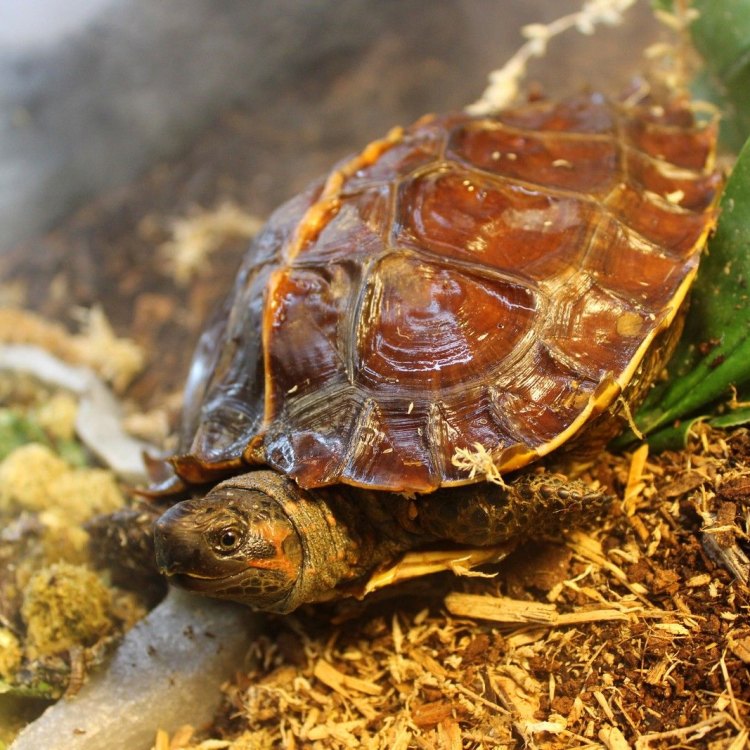
Spiny Hill Turtle
- Adult Size: 24-28 cm (9-11 inches)
- Average Lifespan: Up to 20 years
- Reproduction: Oviparous
- Reproductive Behavior: Mating occurs in water, females lay eggs on land
- Sound or Call: No specific sound or call
- Migration Pattern: Non-migratory
- Social Groups: Solitary
- Behavior: Primarily terrestrial and secretive
- Threats: Habitat loss, poaching, and collection for the pet trade
- Conservation Status: Endangered
- Impact on Ecosystem: Helps in seed dispersal and population control of insects and small animals
- Human Use: Collected for the pet trade
- Distinctive Features: Spiny projections on the upper shell
- Interesting Facts: 1. The spiny projections on the shell serve as a defense mechanism. 2. Spiny Hill Turtles are excellent climbers and spend a significant amount of time in trees. 3. They are capable swimmers and can stay submerged for extended periods. 4. The shell of the Spiny Hill Turtle becomes smoother with age. 5. They are known to eat a variety of food including fruits, leaves, flowers, and insects.
- Predator: Large snakes, birds, and mammals
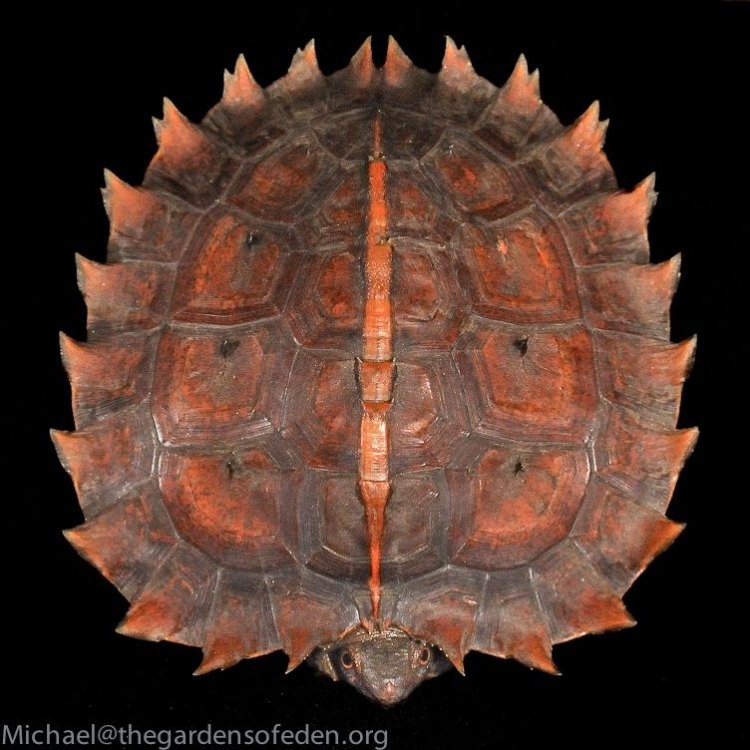
Heosemys spinosa
The Fascinating World of Spiny Hill Turtles
In the animal kingdom, there are some creatures that easily capture our imagination. They possess unique qualities and characteristics that make them stand out from the rest. One such creature is the Spiny Hill Turtle (Heosemys spinosa), also known as the Sunda or Malayan Forest Turtle. This striking turtle, found in Southeast Asia, has intrigued researchers and captivated the hearts of many with its interesting features and behavior PeaceOfAnimals.Com. From its spiny shell to its impressive survival tactics, the Spiny Hill Turtle is truly a remarkable species.The Spiny Hill Turtle is a medium-sized turtle, with an adult size ranging from 24-28 cm (9-11 inches). These turtles are not only eye-catching due to their size, but also because of their unique appearance. Their upper shell, or carapace, is adorned with numerous pointed projections, hence the name "spiny" in their common name. These spiny projections serve as a defense mechanism against predators, making it difficult for them to swallow the turtle. The shell is typically brown in color, with shades of red and black, providing perfect camouflage in the forest habitats where they reside.
One of the most interesting features of the Spiny Hill Turtle is its reproductive behavior. These turtles are oviparous, meaning they lay eggs. Mating occurs in water, with the male turtle chasing the female Sapsali. Once the female is ready to lay eggs, she will leave the water and search for a suitable location on land to create a nest. The nesting season for Spiny Hill Turtles is typically between March and August, with females laying anywhere from 2-9 eggs at a time. After approximately 70 days, the eggs will hatch, and tiny hatchlings will emerge.
Unlike some turtle species, Spiny Hill Turtles do not have a specific sound or call. This may be due to their solitary lifestyle. These turtles prefer to live alone, and social groups are rare to find. They are primarily terrestrial, meaning they spend most of their time on land, and are rather secretive in nature, making them difficult to spot in the wild.
The Spiny Hill Turtle is a non-migratory species, meaning they do not migrate to different locations. They are native to Southeast Asia, primarily found in Indonesia, Malaysia, and Thailand. Their preferred habitat is in leaf-littered forests, streams, and rivers. However, due to their reclusive nature, their exact population numbers are unknown.
Unfortunately, Spiny Hill Turtles are facing numerous threats in their natural habitats. Habitat loss due to deforestation and expansion of human settlements is one of the main reasons for their declining population. Poaching and collection for the pet trade are also significant factors contributing to their decreasing numbers. The spiny projections on their shell make them desirable in the pet trade, where they are sold as exotic pets. This illegal trade poses a severe threat to the survival of this species.
Due to these threats, the Spiny Hill Turtle is listed as endangered on the IUCN Red List of Threatened Species. Conservation efforts are being made to protect their habitats and regulate the trade of this species. However, much more needs to be done to ensure their survival.
Apart from their unique physical features and behavior, Spiny Hill Turtles also play an essential role in their ecosystem. These turtles are vegetarian and are known to have a diverse diet, including fruits, leaves, flowers, and insects. As they move through their habitat, they also help in seed dispersal, which aids in the growth of various plant species.
The presence of Spiny Hill Turtles in the ecosystem also has an impact on population control of insects and small animals. Being natural predators of these creatures, the turtles help maintain a balance in the ecosystem by keeping these populations in check.
Apart from their role in the ecosystem, Spiny Hill Turtles also have a history of human use. They have been collected for the pet trade for centuries, and their meat has been consumed by some indigenous communities in Southeast Asia. However, with stricter laws and regulations in place, the collection and consumption of this species have significantly reduced.
The spiny shell is not the only distinctive feature of the Spiny Hill Turtle. As they grow older, their shell becomes smoother, losing many of the spiny projections. This transformation makes it easy to identify their age, with older turtles having a smoother shell, while younger ones have a more spiny appearance.
In addition to their physical features, Spiny Hill Turtles also have some interesting habits. Unlike other turtle species, Spiny Hill Turtles are excellent climbers and spend a significant amount of time in trees. This adaptation helps them find food and evade predators. They are also capable swimmers and can stay submerged for extended periods, making it easier for them to escape predators.
Speaking of predators, Spiny Hill Turtles have a few natural enemies in their habitat. Large snakes, birds, and mammals are among their most significant predators, preying on these turtles and their eggs. This danger, along with the threats from human activities, makes it a challenge for these turtles to survive in the wild.
In conclusion, the Spiny Hill Turtle is a unique and fascinating species. With their spiny shell, solitary behavior, and impressive survival tactics, they have captured the attention of many. However, they also face numerous threats, making it crucial for us to protect and conserve this endangered species. Through education, awareness, and conservation efforts, we can ensure the survival of this remarkable and vital species in Southeast Asia's forests for generations to come.
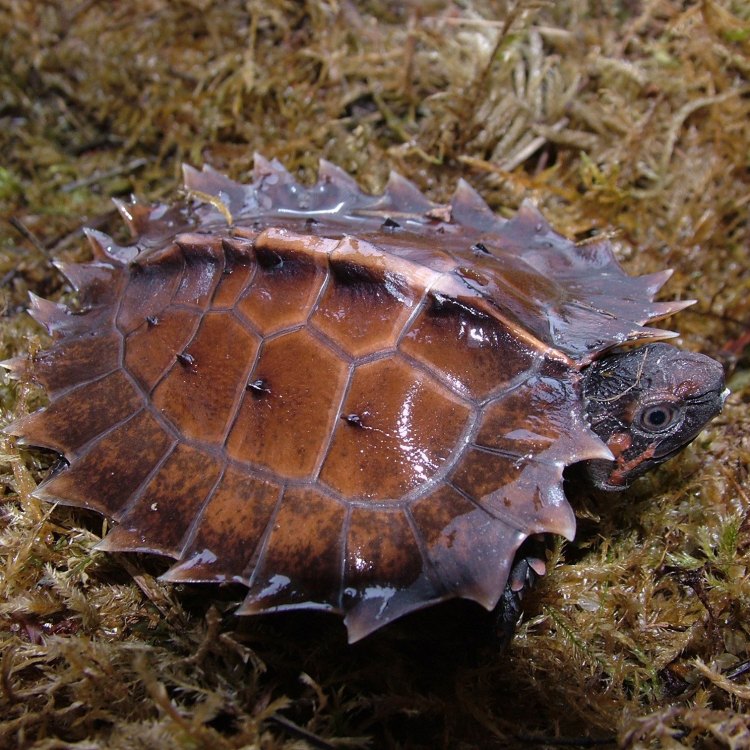
Welcome to the World of the Spiny Hill Turtle: A Majestic Creature of Southeast Asia
Disclaimer: The content provided is for informational purposes only. We cannot guarantee the accuracy of the information on this page 100%. All information provided here may change without prior notice.

